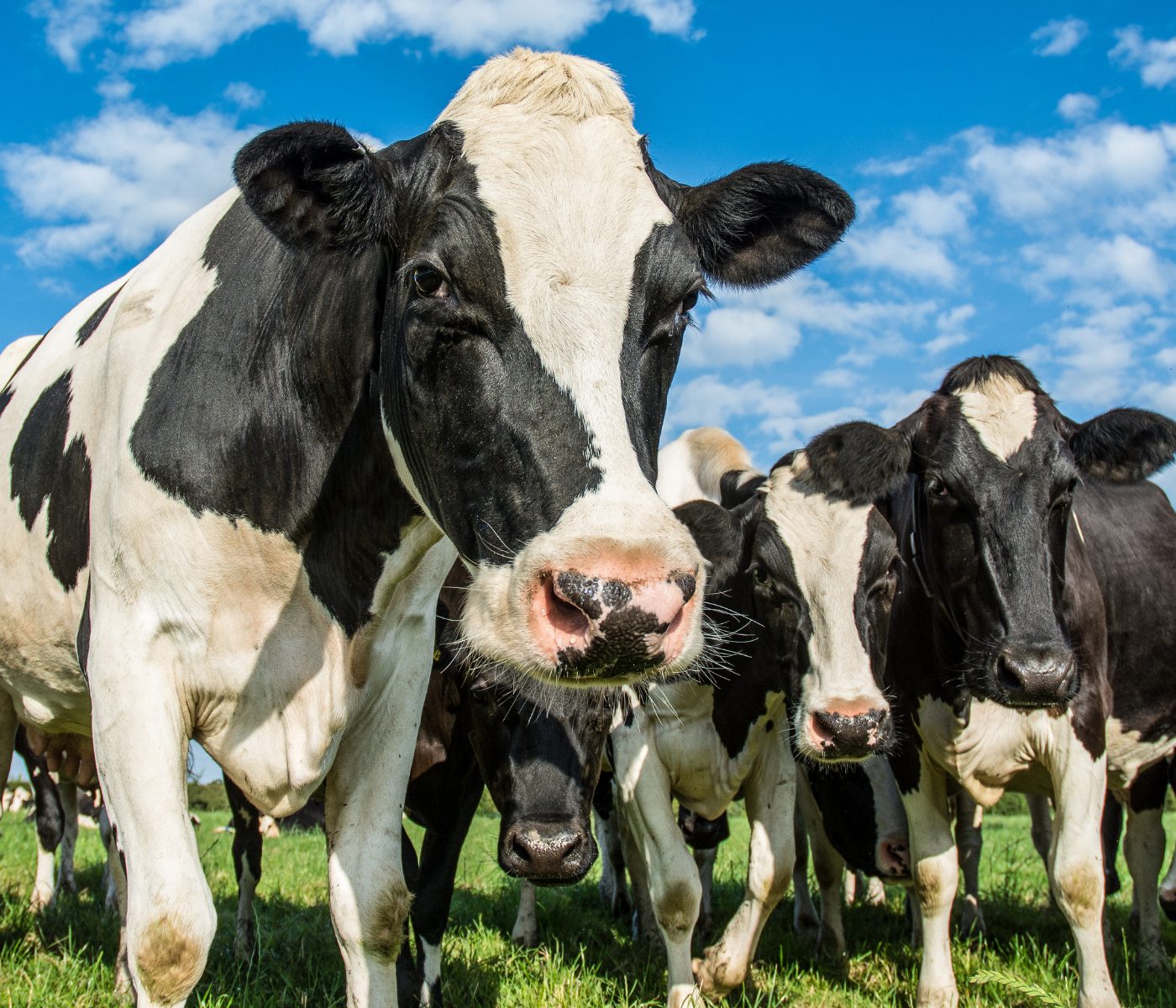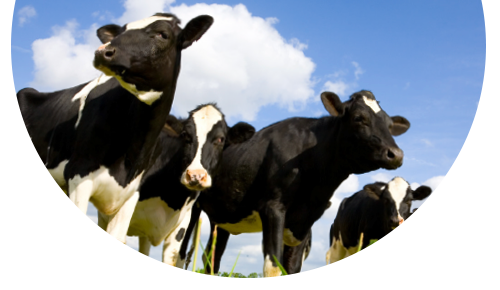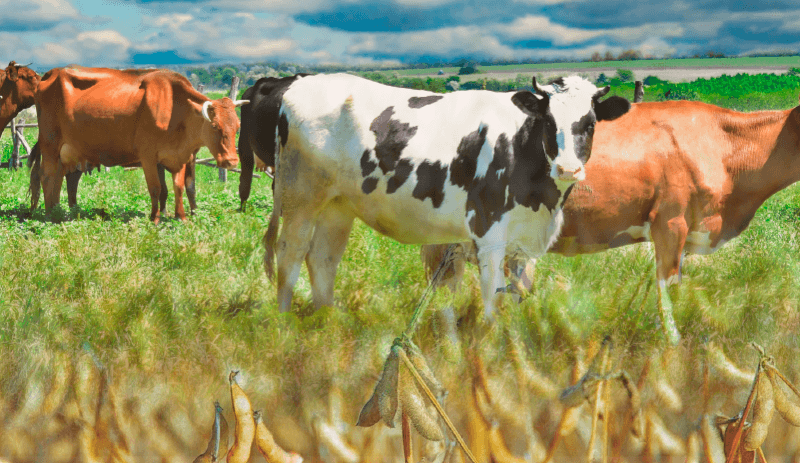 15 Oct 2023
15 Oct 2023
The use of fats in ruminant diets is not always carried out properly, and it is common for productive results to fall short of expectations due to excessive consumption or inappropriate use of fat sources which are rich in fatty acids (FAs).
When the ration contains an excess of fat, especially unsaturated fatty acids, it negatively affects the growth of rumen bacteria, with cellulolytic bacteria being more affected than amylolytic bacteria.
Of all the unsaturated fatty acids evaluated, oleic acid (C18:1) has the most inhibitory effect.
When a feed enters the rumen and becomes soaked in oil or fats, the following effects occur:
 It is not recommended for the total fat concentration (ether extract) to exceed 5-6% in the overall diet of a ruminant, regardless of its purpose.
It is not recommended for the total fat concentration (ether extract) to exceed 5-6% in the overall diet of a ruminant, regardless of its purpose.

Hydrogenation of Unsaturated FAs and Protected Fats
Unsaturated FAs have a more negative effect on microorganisms than saturated ones, although they have higher digestibility in the intestines.
Therefore, as the degree of saturation of a fat increases (through biohydrogenation in the rumen or other external hydrogenation methods), the negative effects on ruminal fermentation decrease, but the intestinal digestibility of these fatty acids also decreases.
Protected fats are a means to increase daily fat consumption in ruminant livestock without affecting their metabolism.There are currently two types of protected fats:

Calcium salts of fatty acids or calcium soaps: widely used as a source of protected fat in the rumen due to their very low dissociation at pH < 6.0 and their satisfactory stability at pH 5.5.
However, in the abomasum, the pH decreases by about 2-2.5 points, causing dissociation into calcium and the corresponding free FAs, which are digested in the small intestine.(Mateos et al., 1996).
Most of the available calcium soaps are manufactured from distilled palm fatty acids, which have a suitable profile for ruminants (melting point between 38-39 °C, close to the animal’s body temperature, and, in addition, high digestibility).
 Saturated or hydrogenated fats: Inert in the rumen (low solubility) due to their physicochemical properties that limit their utilization by ruminal microorganisms, allowing them to reach the small intestine for use as a source of energy and FAs. The process of obtaining these fats involves partially hydrogenating the double bonds of various FAs to raise their melting point, reducing their activity in the rumen by increasing insolubility. The main sources used in the production of these fats are tallow and by-products from palm and fish oil refining.(Davis, 1993).
Saturated or hydrogenated fats: Inert in the rumen (low solubility) due to their physicochemical properties that limit their utilization by ruminal microorganisms, allowing them to reach the small intestine for use as a source of energy and FAs. The process of obtaining these fats involves partially hydrogenating the double bonds of various FAs to raise their melting point, reducing their activity in the rumen by increasing insolubility. The main sources used in the production of these fats are tallow and by-products from palm and fish oil refining.(Davis, 1993).
The process of obtaining these types of fats involves partially hydrogenating the double bonds of various fatty acids in order to raise their melting point, thereby reducing their activity in the rumen by increasing their insolubility. The primary sources used in the production of these fats are tallow and by-products from the refining of palm and fish oil.
Strategies for supplying fatty acids without adverse effects
Oilseeds
Through “whole” seeds of soy, sunflower, or cotton. However, whole seeds reduce protein utilization and increase fecal losses. When processed (milling or crushing), they release oils and create an inadequate ruminal environment (lipolysis and rancidity). As well as releasing toxins that can affect the animal’s health.
 On the other hand, extrusion helps reduce the negative effects of rancidity, although when temperatures above 150°C are used, the chemical composition of fats and proteins can be affected. In some cases, it increases the “bypass” ability of both, but in others, it reduces digestibility at the ruminal and intestinal levels, resulting in a significant loss of protein and fat in feces. On the other hand, extrusion helps reduce the negative effects of rancidity, although when temperatures above 150°C are used, the chemical composition of fats and proteins can be affected. In some cases, it increases the “bypass” ability of both, but in others, it reduces digestibility at the ruminal and intestinal levels, resulting in a significant loss of protein and fat in feces. |

Encapsulated fats
Fats can also be encapsulated with a protein coating, which is further protected with formaldehyde to prevent dehydration in the rumen. During this complex and costly process, these capsules can break, releasing the fats in the rumen.
Hardened Hydrogenated Fats
As mentioned earlier, these are saturated fats produced through hydrogenation (with a high proportion of palmitic and stearic acid) with a high melting point and low microbial inhibition. The results in milk production and milk fat percentage are highly variable (random) due to their low digestibility.
Calcium Salts of Fatty Acids
The protection of fatty acids is achieved through saponification with calcium. The result, as mentioned earlier, is a rumen-inert fat that does not affect bacterial fermentation and is well-digested in the intestines after hydrolysis in the abomasum. Additionally, it is highly palatable and blends well with fine grains and forage (silage or hay).

CONCLUSIONS
The supply of protected fats is suitable for high-production cows or at the beginning of lactation when the traditional diet does not provide sufficient energy to sustain production, the animal’s body condition, and reproductive efficiency. However, in order to achieve an effective use of fat supplements, the cost per unit of energy for those supplements must be calculated.
In recent years, advancements in technology have made it possible to incorporate polyunsaturated omega-type fatty acids into the production of calcium soaps. This approach stands out as the sole method enabling the efficient supplementation of these compounds in ruminant nutrition (Thatcher, 2008).

BIBLIOGRAPHICAL REFERENCES
Clariget, J and La Manna, A. 2016. Considerations for Not Exceeding Fat in Bovine Diet (INIA Uruguay). Davis C. 1993. Feeding High-Producing Dairy Cows. Milk Specialties Company. Pp 60. Protected Fats “By Pass,” 2017. http://www.infocarne.com/bovino/grasas.asp Mateos G., Rebollar P., Medel P. 1996. Use of Fats and Lipid Products in Animal Nutrition: Pure Fats and Mixtures. Spanish Foundation for the Development of Animal Nutrition. W. Thatcher, F. Silvestre, J.P. Santos, and C. Staples (2008). Using Dietary Fats to Improve Reproductive Performance in Lactating Dairy Cows. WCDS Advances in Dairy Technology (2008) Volume 20: 163-17.
Subscribe now to the technical magazine of animal nutrition
AUTHORS

Hybrid Rye Potential in Laying Hen Feed Rations
Gwendolyn Jones
A day in the life of phosphorus in pigs: Part I
Rafael Duran Giménez-Rico
Use of enzymes in diets for ruminants
Braulio de la Calle Campos
Minerals and Hoof Health in the Pregnant Sow
Juan Gabriel Espino
Impact of Oxidized Fats on Swine Reproduction and Offspring
Maria Alejandra Perez Alvarado